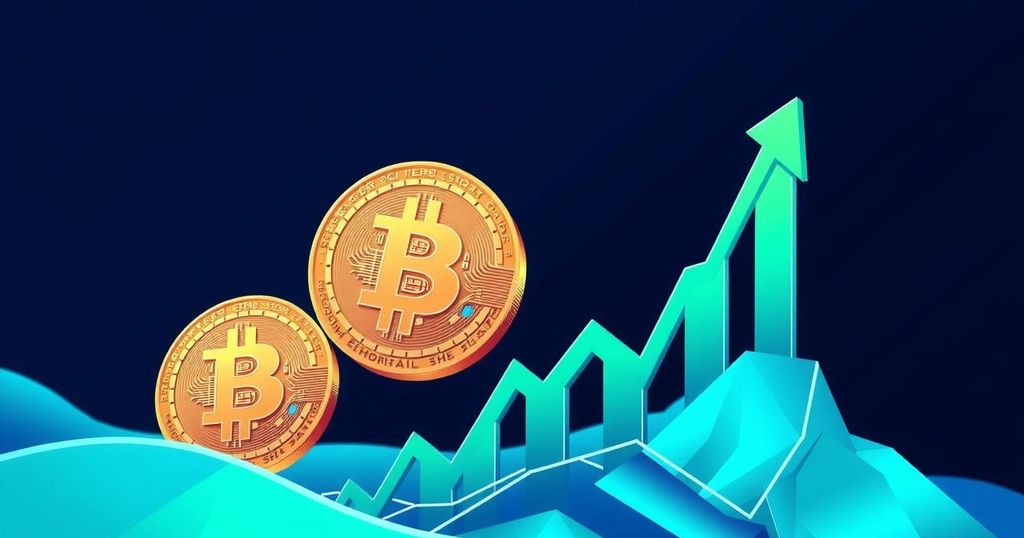Bitcoin Nears $96K Amid Economic Slowdown Concerns
Bitcoin has surged above $95,000, closing in on $96,000 amid a recovering stock market. Analysts express concern about potential market blindness to economic data suggesting a slowdown. Recent metrics indicate low consumer confidence and job openings decline, sparking speculation on future Fed rate cuts. Meanwhile, a new trade deal is pending ratification, adding complexity to market dynamics.
Bitcoin’s price trajectory has seen some fascinating developments, inching above the $95,000 mark, which sets it close to potentially surpassing the $96,000 level for the first time in over two months. On Tuesday, the cryptocurrency lifted by 1%, reaching nearly $95,400 as analysts keep a watchful eye on market sentiment amid ongoing economic concerns. The broader crypto market experienced a modest rise, with the CoinDesk 20 index reflecting a 1.1% increase, driven in part by Bitcoin Cash (BCH), which surged an impressive 6.3%.
Meanwhile, the stock market is shaking off the effects of early April’s turmoil induced by tariffs, with notable gains in the S&P 500 and Nasdaq, both rising by 0.55%. Yet, despite these upward trends, there’s an underlying sense that market players are possibly overlooking critical economic signals. Jeff Park, who leads Alpha Strategies at Bitwise, suggested that the current market behaviour appears somewhat detached from recent economic data that indicates a slowdown driven by tariff implications.
Consumer confidence metrics have hit an alarming low not seen since May 2020, and outlook measures have also dipped to their lowest since 2011, reflecting growing unease. Additionally, the JOLTS report indicated that US job openings dropped to 7.19 million in March, below the anticipated 7.5 million. In light of this data, it raises questions about the sustainability of the current market rally.
In a related development, Secretary of Commerce Howard Lutnick revealed that an unnamed country has reached a preliminary agreement on a trade deal, pending ratification by that country’s leaders. This announcement adds another layer to the complex dynamics affecting both traditional and crypto markets.
Park did not hold back in his critique, remarking on a general ignorance to the potential consequences of recent policy shifts. He noted that a Fed interest rate cut could become irrelevant if the US faces diminished creditworthiness globally due to the implications of dollar weaponization from tariff actions. He stated unequivocally, “if the notion of risk-free as we know it is fundamentally challenged forever, then the cost of capital globally is going higher.”
As the market fluctuates between optimism and caution, it remains to be seen how impending economic realities will shape investor sentiment in the weeks to come.
In summary, while Bitcoin hovers near significant milestones, broader economic trends warrant a cautious eye—there are critical signals that could affect the trajectory ahead.




Post Comment